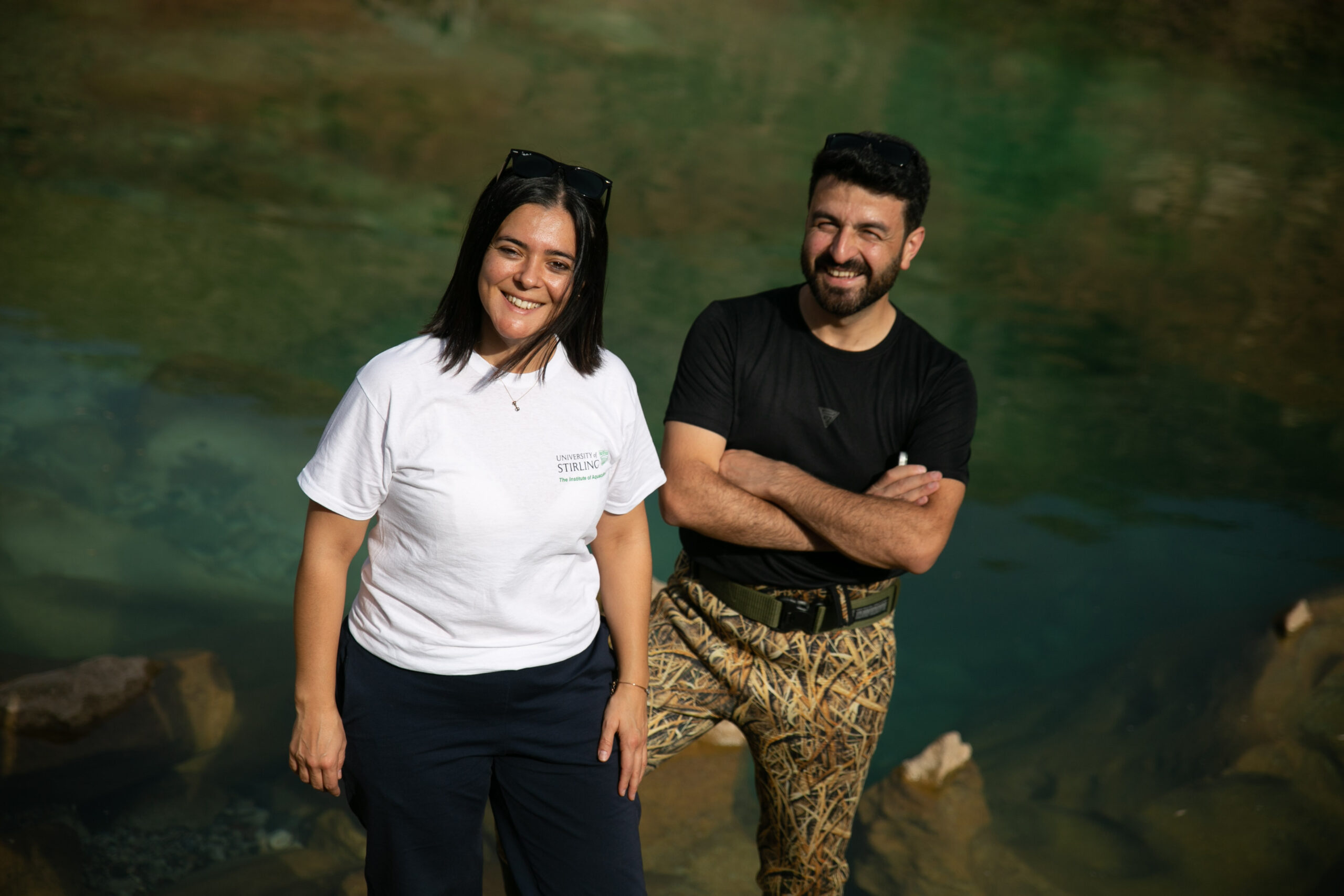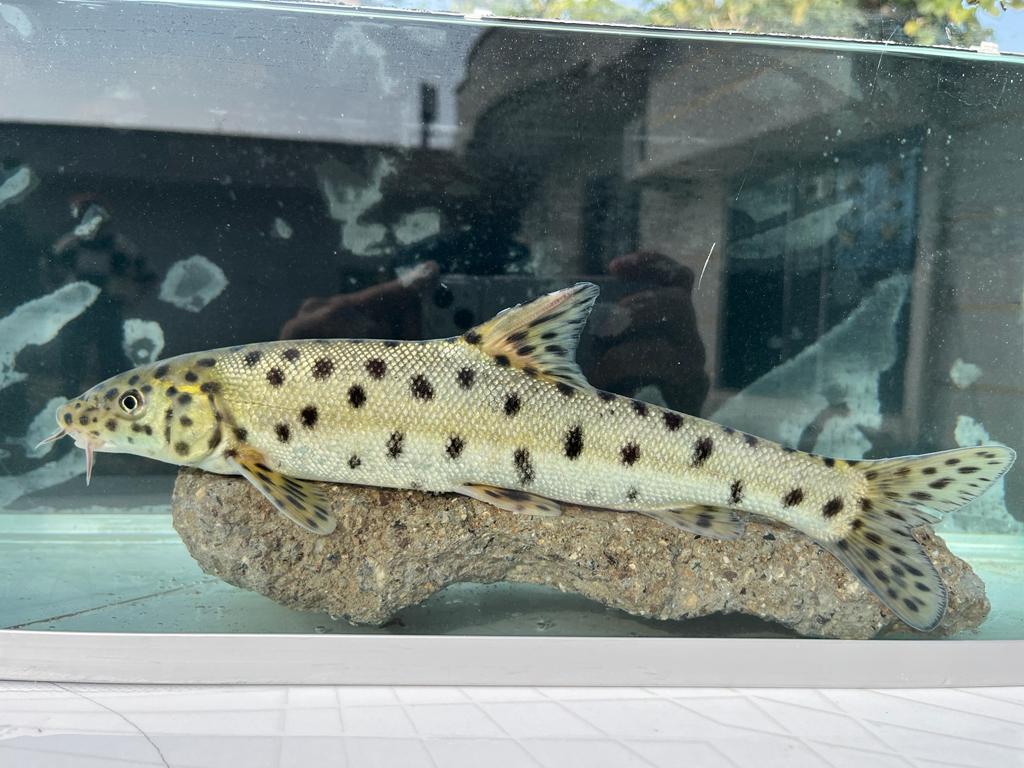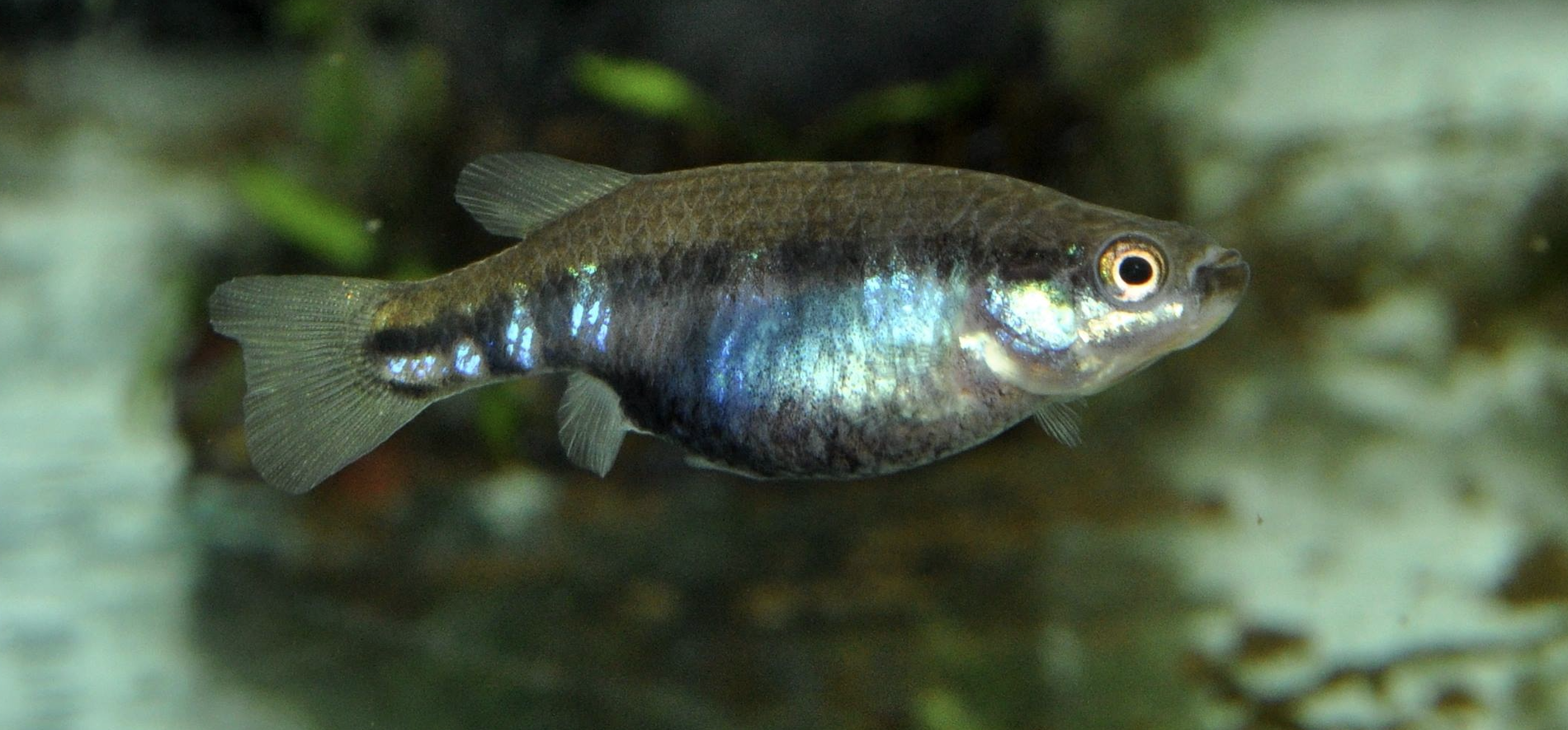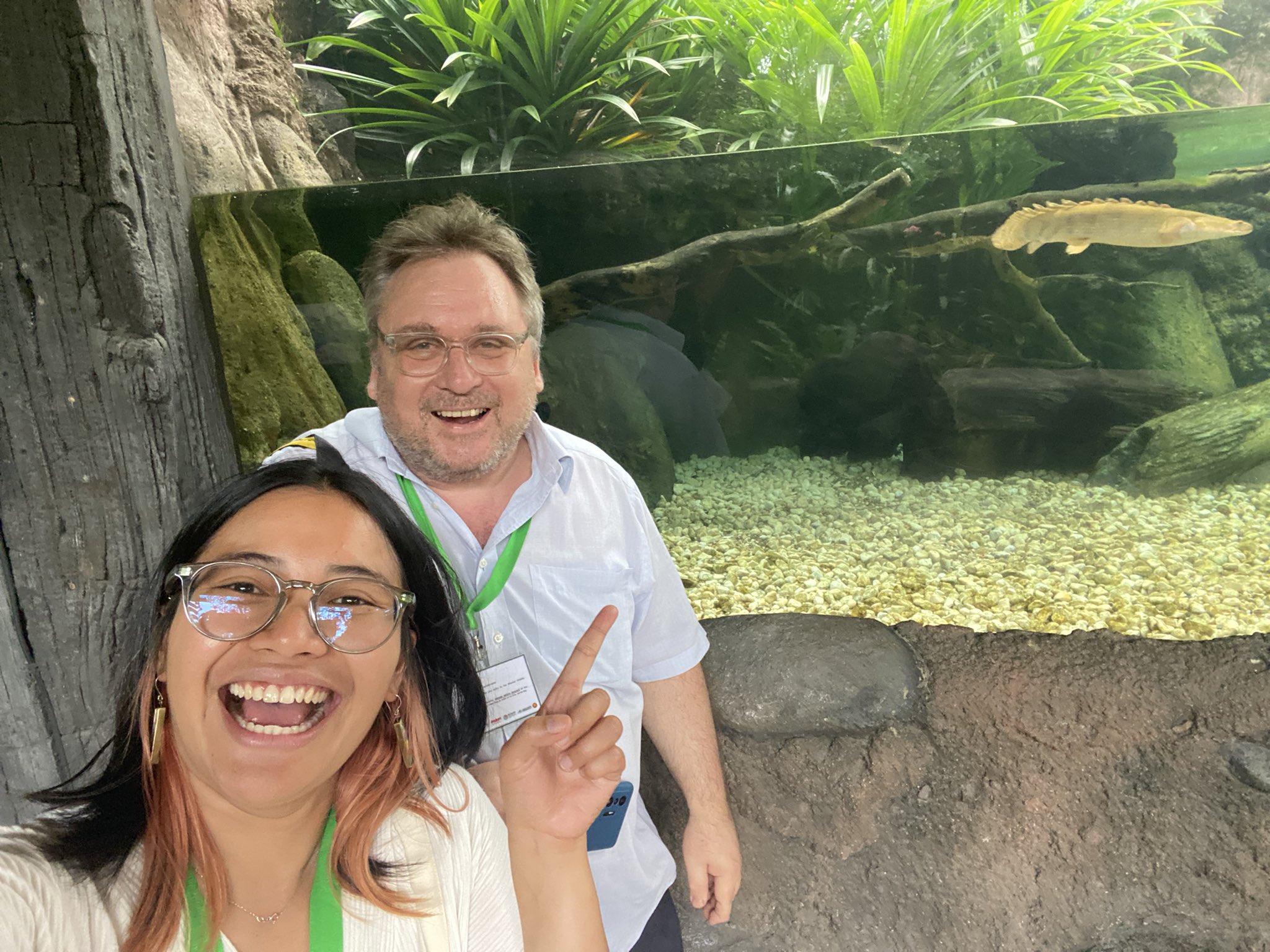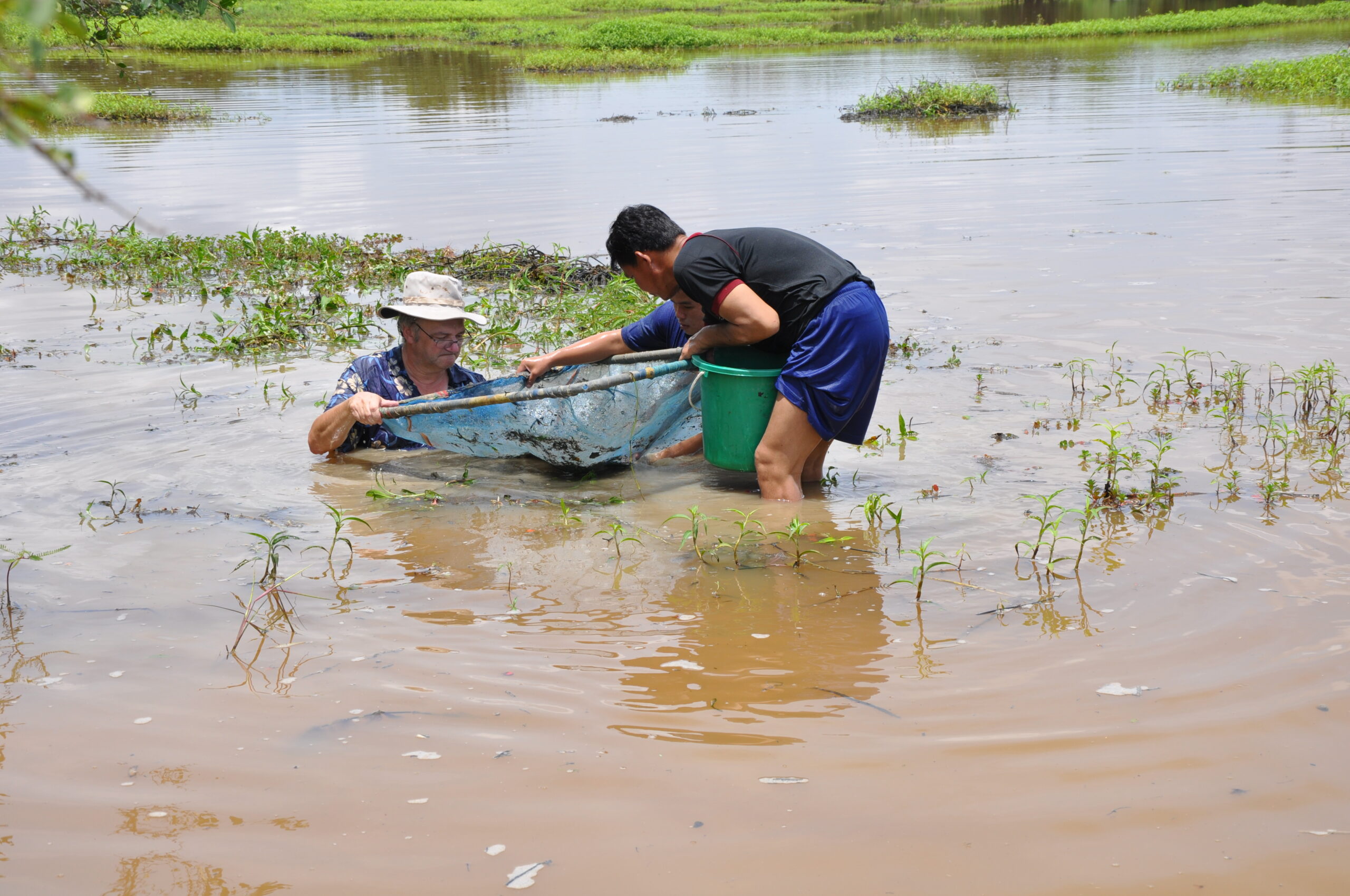Searching for the fat catfish with Dr. Ian Harrison
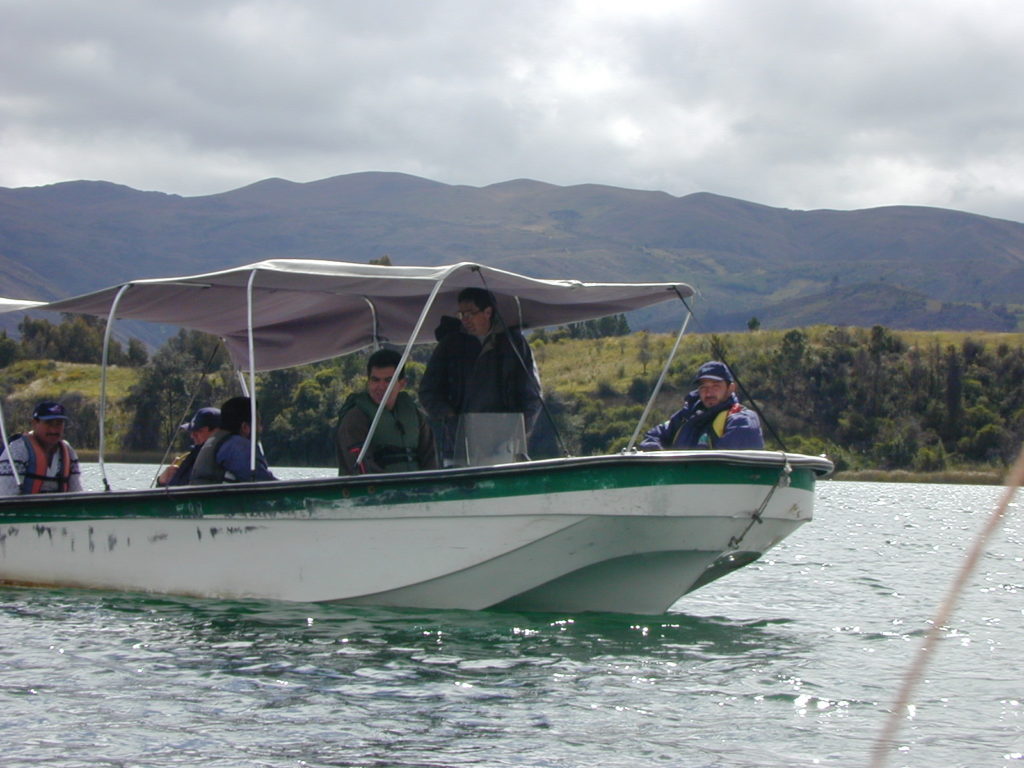
The 1999 team on Lake Tota © Dr. Ian Harrison
by Michael Edmondstone
“The expedition was in collaboration with the American Museum of Natural History in New York, the Universidad Nacional de Colombia in Bogota, and a local environmental organisation in Colombia, CORPOBOYACA, who have offices and laboratories on the lake shore.
“At the time, there was a lot of guerilla activity in the area: mainly the FARQ. My colleagues at the university had notified them of our intentions and had received their permission to work there. I was told that some members of FARC were quite hospitable to the Universidad Nacional, because of its role as a public serving university”.
How did the expedition go?
It went OK, but we had problems that meant we had to finish early. On the second day, we met this fisherman who some of the other team members were nervous about. He was asking lots of questions, and with three visiting North Americans, we knew that would attract attention. The team were nervous that he would pass information to another guerrilla group in the area. The lake is a crater lake and, where we were, there was one main road in, so it would be easy for anyone to set up a roadblock and make it difficult for us to leave, or even kidnap us. We left early, after three days, instead of staying for a full week. Plus it got really rainy, so it was difficult to do any work.
The good side is that the environment agency there: CORPOBOYACA, and the local police were extremely helpful. They let us sleep in the CORPOBOYACA field station, and provided us with boats and police security.. We got incredible help from the university, the local people were extremely friendly and helpful, and the first couple of days went really well , but then we hit the problems with security and weathers. We didn’t have enough time to find the fish.
Why do you think the fish wasn’t found?
In three days you can barely get things going. If we could set some gill nets around the edge of the lake and do a deeper water trawl, it may have helped. We were also only working on one side of the lake and it’s a pretty big lake: we probably only sampled something like 10% of it”.
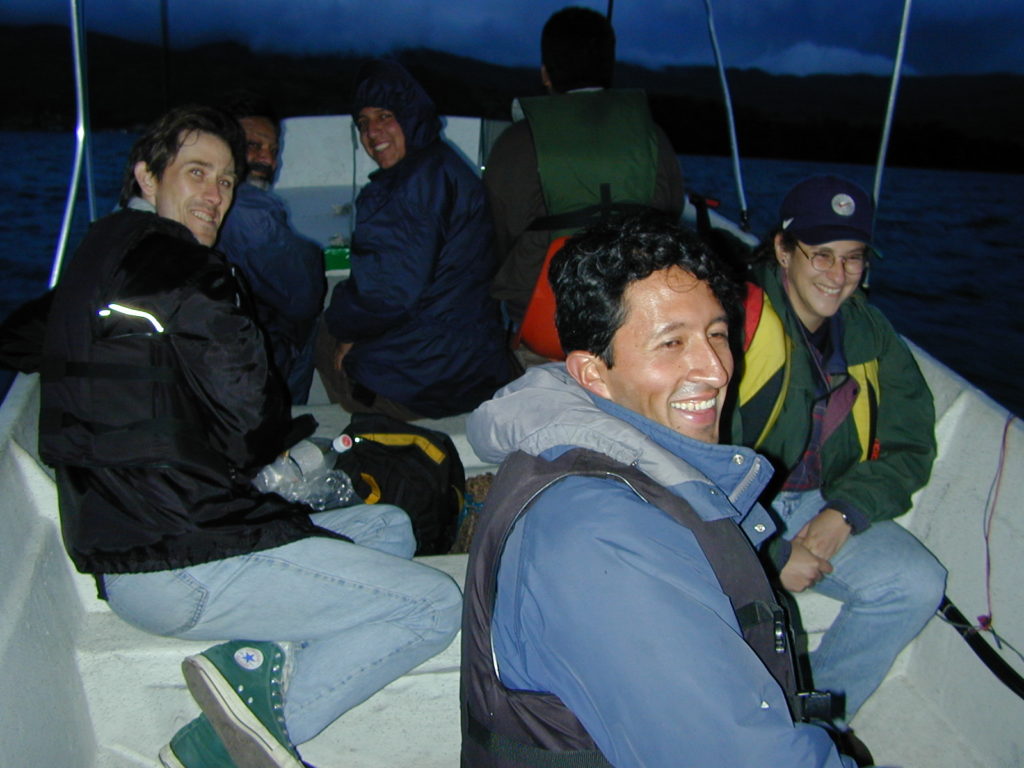
Ian (left) and the team on the boat at night © Dr. Ian Harrison
What makes you think it might be found this time around?
“We didn’t get the time before, and that’s the key thing. The university has gone back but they haven’t really had significant time to monitor fully. The eDNA would be extremely helpful: the main challenge with that is getting the baseline sequence for this species, the reference to really understand what you’re picking up. One could pick up DNA of the other catfish that live in the lake”.
Do you think it’s still there?
I don’t see why it shouldn’t be – there’s as much reason to think it is there as not. The main reason is competition from introduced trout, which is a real risk. But we know so little about it and if it tends to live in the deeper parts of the lake, there’s a good chance it could still be there, as trout probably don’t go to the deeper parts of the lake. There was a potential sighting of it in the early 1980s, when divers thought they’d seen it, which was after the trout were introduced.
There are so many cases with fish where they don’t get seen for a long time, and the reasons why people think it’s no longer there aren’t fully compelling, and then they get sighted again. Which is not to say that we shouldn’t take their risk of extinction as very serious; but it does mean that we really need to look carefully for them before we give up on them. Because once we do that, we are closing the door on any other conservation effort.
Why do you think it has the bizarre fatty rings?
There have been a tonne of hypotheses, and when we first went on the expedition it was in large part to try to find some living fat catfishes and get them into an aquarium and study them. To try and find out why it has these rings.
Some people have suggested the fat could be for buoyancy regulation, but I don’t really see how that would work. I’ve also read it’s a temperature thing, as the lake is cold, but fish generally don’t thermoregulate. It may due to what they are eating, which creates large amounts of fat, which creates a reserve for them, and if there’s not a lot of food in the lake, this could be an adaptation. But other species live in the lake, and they don’t do that.
There are lots of speculations, but that’s all they are – speculations – and that’s why it would be so neat to get hold of it and try to understand the physiology.
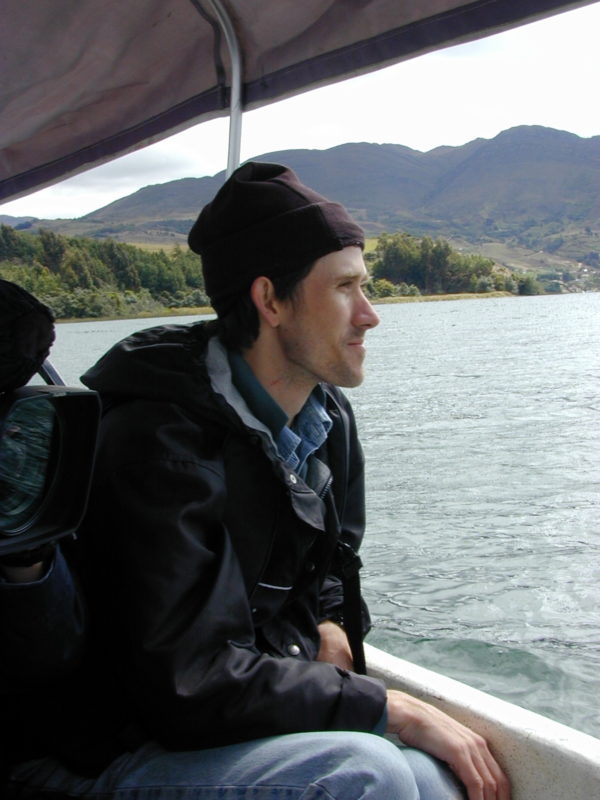
Ian on the boat © Dr Ian Harrison
What would be the best thing to do if it was found?
If it’s found, then the lake will become an AZE (Alliance for Zero Extinction) site for a start, setting it up as a conservation priority area. There would then be reason to work out whereabouts the fish lives in the lakes, and how threatened is it from the presence of the trout, or from other threats. It gives reason to be more careful about managing the lake; for example there is a lot of agriculture around the lake, which has risks of fertiliser runoff. Ultimately, it would mark the lake as a place with a unique species. And if we could set up a conservation breeding programme, that would be really excellent.
The fat catfish is truly one of the unsolved mysteries of the freshwater realm. Join us on the journey as we try to rediscover this Lost Fish, and try to figure out more about its bizarre appearance!

